 The virtue believed to be inherent in precious stones was thought to gain power when the stone was engraved with a symbol. This notion suggests a considerable development of civilization, as the art of engraving on stones presents many mechanical difficulties and requires a high level of artistic and technical skill. The earliest engraved stones- the Babylonian cylinders and the Egyptian scarabs, were both designed to serve a practical purpose; to be seals. However, in a large number of cases, these old seals were looked upon as endowed with a talismanic power, and were worn on the person as talismans instead.
The virtue believed to be inherent in precious stones was thought to gain power when the stone was engraved with a symbol. This notion suggests a considerable development of civilization, as the art of engraving on stones presents many mechanical difficulties and requires a high level of artistic and technical skill. The earliest engraved stones- the Babylonian cylinders and the Egyptian scarabs, were both designed to serve a practical purpose; to be seals. However, in a large number of cases, these old seals were looked upon as endowed with a talismanic power, and were worn on the person as talismans instead.
 These ornamental scarabs the Egyptians cherished are usually black but sometimes show various metallic colors as well. The beetle (after gathering up dung for the reception of the eggs) rolls dung along, using its hind legs to propel it, until the material turns from soft, in an irregular form, to hard and completely round. Egyptians found great symbolism in this beetle- an emblem of the world of fatherhood and of man. The round ball where the eggs were deposited symbolized the world, and the scarab represented different types of fatherhood and man. At the same time, as only adult beetles were ever observed, it was believed that these insects represented reincarnation since it was not yet discovered that "the eggs or larval and pupa stages had anything to do with the generation of a beetle."" Thus, the scarab was used a symbol of immortality."
These ornamental scarabs the Egyptians cherished are usually black but sometimes show various metallic colors as well. The beetle (after gathering up dung for the reception of the eggs) rolls dung along, using its hind legs to propel it, until the material turns from soft, in an irregular form, to hard and completely round. Egyptians found great symbolism in this beetle- an emblem of the world of fatherhood and of man. The round ball where the eggs were deposited symbolized the world, and the scarab represented different types of fatherhood and man. At the same time, as only adult beetles were ever observed, it was believed that these insects represented reincarnation since it was not yet discovered that "the eggs or larval and pupa stages had anything to do with the generation of a beetle."" Thus, the scarab was used a symbol of immortality."
 Scarabs are usually engraved with the hieroglyph for life and power. The emblem of stability is also used, as well as many other insignias. In addition to these simple symbols, many scarabs have legends which speak of them having the power to bring their wearers good fortune.
Scarabs are usually engraved with the hieroglyph for life and power. The emblem of stability is also used, as well as many other insignias. In addition to these simple symbols, many scarabs have legends which speak of them having the power to bring their wearers good fortune.
 Some of the Egyptian scarabs were evidently used as talismanic gifts. Two of these scarabs can be found in the Metropolitan Museum in New York. One is engraved with, "May Ra Wish You A Happy New Year,"" and the other with, ""May your name be established, may you have a son,"" and ""May your house flourish every day."" It is interesting that the modern phrase, ""Happy New Year"" was current in Egypt thousands of years ago."
Some of the Egyptian scarabs were evidently used as talismanic gifts. Two of these scarabs can be found in the Metropolitan Museum in New York. One is engraved with, "May Ra Wish You A Happy New Year,"" and the other with, ""May your name be established, may you have a son,"" and ""May your house flourish every day."" It is interesting that the modern phrase, ""Happy New Year"" was current in Egypt thousands of years ago."
 The Egyptian amulets of the earliest period, up to the XII dynasty (circa 2000 B.C.), are very different from those made after the beginning of the XVIII dynasty (1580 B.C.). The older amulets are smaller and in the form of animals or heads of animals. The precious stones of these amulets are mostly carnelian,
The Egyptian amulets of the earliest period, up to the XII dynasty (circa 2000 B.C.), are very different from those made after the beginning of the XVIII dynasty (1580 B.C.). The older amulets are smaller and in the form of animals or heads of animals. The precious stones of these amulets are mostly carnelian, ![]() beryl, and
beryl, and ![]() amethyst. After the end of the Hyksos period came the brilliant revival and development of Egyptian civilization. Some of the old forms were then not made anymore while others were modified in shape and significance. In some, the animal forms lost much of their fetich-like quality and became highly regarded as images of the various types of divinities worshiped in this later period. In many cases, the animal form was entirely or partially discarded. However, while some of these images were all human, many of them show a human body with the head of an animal. Various symbolic designs were also favored; one believed to signify the blood of Isis, having the form of a knot or tie. A frog made out of
amethyst. After the end of the Hyksos period came the brilliant revival and development of Egyptian civilization. Some of the old forms were then not made anymore while others were modified in shape and significance. In some, the animal forms lost much of their fetich-like quality and became highly regarded as images of the various types of divinities worshiped in this later period. In many cases, the animal form was entirely or partially discarded. However, while some of these images were all human, many of them show a human body with the head of an animal. Various symbolic designs were also favored; one believed to signify the blood of Isis, having the form of a knot or tie. A frog made out of ![]() lapis-lazuli and having eyes of gold is one of these amulets from the XVIII dynasty or later.
lapis-lazuli and having eyes of gold is one of these amulets from the XVIII dynasty or later.
 An interesting Egyptian talisman in the Louvre is engraved with a design representing Thothmes II seizing a lion by the tail and raising the animal up high. At the same time, he brandishes in the other hand a club, with which he is about to dash out the lion's brains. The Egyptian word "strength"" is engraved under this design and shows that the virtue of the talisman was to increase the strength and courage of the wearer, the inscription being a kind of perpetual invocation to the higher powers whose aid was sought."
An interesting Egyptian talisman in the Louvre is engraved with a design representing Thothmes II seizing a lion by the tail and raising the animal up high. At the same time, he brandishes in the other hand a club, with which he is about to dash out the lion's brains. The Egyptian word "strength"" is engraved under this design and shows that the virtue of the talisman was to increase the strength and courage of the wearer, the inscription being a kind of perpetual invocation to the higher powers whose aid was sought."
 It was written in many works, that when in the desert, the children of Israel wore carnelian with engraved figures on them, "just as seals are engraved."" Many writers addressed this fact. The story was probably a result of the early connection of carnelian with the odem, the first stone of the breastplate. The odem was a red stone and could have actually been the carnelian. This stone was one of the first ornamental stones used for engraving. Many such specimens from early Egyptian times have been found and preserved. Carnelian was believed to calm all angry passions as it has a calming and cooling effect on the body if worn on the finger or the neck."
It was written in many works, that when in the desert, the children of Israel wore carnelian with engraved figures on them, "just as seals are engraved."" Many writers addressed this fact. The story was probably a result of the early connection of carnelian with the odem, the first stone of the breastplate. The odem was a red stone and could have actually been the carnelian. This stone was one of the first ornamental stones used for engraving. Many such specimens from early Egyptian times have been found and preserved. Carnelian was believed to calm all angry passions as it has a calming and cooling effect on the body if worn on the finger or the neck."
 The historically famous engraved Assyrio-Babylonian cylinders are a class of amulets even older than the Egyptian scarabs. The purpose for which these cylinders were made remains a mystery and a topic of discussion among scholars. Some think they were used only as seals or signets. Others think many of the cylinders were meant for use strictly as amulets or talismans.
The historically famous engraved Assyrio-Babylonian cylinders are a class of amulets even older than the Egyptian scarabs. The purpose for which these cylinders were made remains a mystery and a topic of discussion among scholars. Some think they were used only as seals or signets. Others think many of the cylinders were meant for use strictly as amulets or talismans.
 These cylinders are perforated and were worn suspended from the neck or wrist, and the engraved designs often represent religious or mythological subjects. The accompanying inscription consists of the names of the gods. Cylinders of this type could not have been used as personal signets, and it is possible that Dr. Wiedemann is right in supposing that their imprint on a document "was considered to impart a certain mystic sanction to the agreement, and render the divinities or spirits accountable for the fulfillment of the contract."""
These cylinders are perforated and were worn suspended from the neck or wrist, and the engraved designs often represent religious or mythological subjects. The accompanying inscription consists of the names of the gods. Cylinders of this type could not have been used as personal signets, and it is possible that Dr. Wiedemann is right in supposing that their imprint on a document "was considered to impart a certain mystic sanction to the agreement, and render the divinities or spirits accountable for the fulfillment of the contract."""
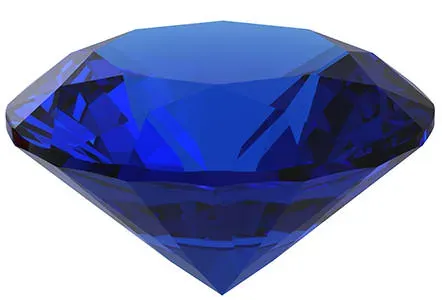 The cylinder is the oldest known form of a seal. Babylonian and Assyrian cylinder seals date as far back as 4000 B.C. Until 2500 B.C., these seals were made of green or black serpentine, conglomerate, diorite, or the cores of conch shells found in the Persian Gulf. The cylindrical form was common between 2500 B.C. to 500 B.C., and was made from red hematite, red ferruginous
The cylinder is the oldest known form of a seal. Babylonian and Assyrian cylinder seals date as far back as 4000 B.C. Until 2500 B.C., these seals were made of green or black serpentine, conglomerate, diorite, or the cores of conch shells found in the Persian Gulf. The cylindrical form was common between 2500 B.C. to 500 B.C., and was made from red hematite, red ferruginous ![]() quartz, or
quartz, or ![]() chalcedony. Between 4000 B.C. and 2500 B.C., these cylinders were shaped as animal forms. Between 2500 B.C. to 500 B.C., the cylinders were inscribed with five or six rows of slim, triangular characters. All of these shapes and inscriptions were made using the point of a
chalcedony. Between 4000 B.C. and 2500 B.C., these cylinders were shaped as animal forms. Between 2500 B.C. to 500 B.C., the cylinders were inscribed with five or six rows of slim, triangular characters. All of these shapes and inscriptions were made using the point of a ![]() sapphire, not using a wheel. A wheel was first used in the fifth century B.C. in Babylonian and Assyrian stone-engraving. During the sixth century, B.C. cylindrical seals became rare, and tall cone-like seals came into use.
sapphire, not using a wheel. A wheel was first used in the fifth century B.C. in Babylonian and Assyrian stone-engraving. During the sixth century, B.C. cylindrical seals became rare, and tall cone-like seals came into use.
 A new kind of seal emerged from Egypt in the fifth or sixth century B.C.- the scarab. Between the third century B.C. until the second or third century A.D., seals slowly became lower and flatter, and perforations larger, until at some point, the seals had ring-like forms. The cylinders were made of different materials including
A new kind of seal emerged from Egypt in the fifth or sixth century B.C.- the scarab. Between the third century B.C. until the second or third century A.D., seals slowly became lower and flatter, and perforations larger, until at some point, the seals had ring-like forms. The cylinders were made of different materials including ![]() lapis-lazuli from mines in Persia, as well as carnelian,
lapis-lazuli from mines in Persia, as well as carnelian, ![]() agate,
agate, ![]() jade,
jade, ![]() jasper, rick-crystals, and
jasper, rick-crystals, and ![]() chalcedony. The most popular and traditional material used was serpentine- a hard black variety of the mineral.
chalcedony. The most popular and traditional material used was serpentine- a hard black variety of the mineral.
 A well-known talismanic cylinder seal has the form of the god Nebo, seated on a throne, with a ring in his left hand. There are two altars in front of him on which there are a crescent moon and a star. There is also another figure of a man, who is looking at the god with adoration. This seal was found in Borsippa and represents the worship of Nebo. Nebo was the god of learning and the inventor of writing. Nebo was also the lord of the planet Mercury. The reference to Nebo's association to Mercury shows a close connection between Babylonian and Graeco-Roman ideas. Nebo was also believed to be the ruler of time and of the four seasons of the year.
A well-known talismanic cylinder seal has the form of the god Nebo, seated on a throne, with a ring in his left hand. There are two altars in front of him on which there are a crescent moon and a star. There is also another figure of a man, who is looking at the god with adoration. This seal was found in Borsippa and represents the worship of Nebo. Nebo was the god of learning and the inventor of writing. Nebo was also the lord of the planet Mercury. The reference to Nebo's association to Mercury shows a close connection between Babylonian and Graeco-Roman ideas. Nebo was also believed to be the ruler of time and of the four seasons of the year.
 The Cretan peasants of today value certain ancient seals very highly, most notably those dating back as early as 2500 B.C. These seals have been found buried in soil. The seals are inscribed with the prehistoric Cretan symbols- their form of writing. The peasants cannot understand these inscriptions, as not even archaeologists can decipher them, but the presence of the symbols create an unusual sense of mystery within the stones. The peasants call these stones galopetrae, or "milk-stones."" The milk-stones are believed to promote the secretion of milk just like galactite does. If it weren't for the Cretan women who carefully preserved these galopetrae, archaeologists would never have had the ability to research the stones and the large supply of these fascinating seals would not be available today."
The Cretan peasants of today value certain ancient seals very highly, most notably those dating back as early as 2500 B.C. These seals have been found buried in soil. The seals are inscribed with the prehistoric Cretan symbols- their form of writing. The peasants cannot understand these inscriptions, as not even archaeologists can decipher them, but the presence of the symbols create an unusual sense of mystery within the stones. The peasants call these stones galopetrae, or "milk-stones."" The milk-stones are believed to promote the secretion of milk just like galactite does. If it weren't for the Cretan women who carefully preserved these galopetrae, archaeologists would never have had the ability to research the stones and the large supply of these fascinating seals would not be available today."
 In the Roman imperial period, many stones were engraved with the figures of Serapis and Isis. The figure of Serapis represented time while Isis represented Earth. Different signs of the zodiac were also engraved on stones during this period. These signs were connected to the birth sign of the stones wearer.
In the Roman imperial period, many stones were engraved with the figures of Serapis and Isis. The figure of Serapis represented time while Isis represented Earth. Different signs of the zodiac were also engraved on stones during this period. These signs were connected to the birth sign of the stones wearer.
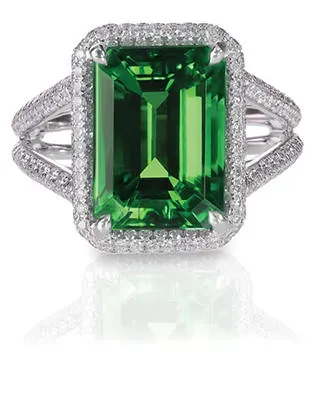 Astrologers derived their lore from the Orient, and all classes of Roman people sought their counseling. The popularity of the ring worn as an amulet engraved with astrological symbols (or the signet), therefore, makes sense. In Roman and Greek times, onyxes, carnelians, and similar stones were engraved. Sometimes emeralds were engraved, and rarely, sapphires or rubies. The higher the value of the stone would logically, make the amulet more expensive. Polycrates owned an
Astrologers derived their lore from the Orient, and all classes of Roman people sought their counseling. The popularity of the ring worn as an amulet engraved with astrological symbols (or the signet), therefore, makes sense. In Roman and Greek times, onyxes, carnelians, and similar stones were engraved. Sometimes emeralds were engraved, and rarely, sapphires or rubies. The higher the value of the stone would logically, make the amulet more expensive. Polycrates owned an ![]() emerald ring which he regarded as the most valuable item in all of his possessions. The ring must have meant more to him than simply a beautiful object.
emerald ring which he regarded as the most valuable item in all of his possessions. The ring must have meant more to him than simply a beautiful object.
 In Roman times, it was believed that images of Alexander the Great possessed magical powers. In the temple of Hercules, Cornelius Macer threw a large party, and the main ornament on the table was an
In Roman times, it was believed that images of Alexander the Great possessed magical powers. In the temple of Hercules, Cornelius Macer threw a large party, and the main ornament on the table was an ![]() amber cup with a portrait of Alexander and his entire history engraved on it. Macer began the ritual of drinking from the cup to the health of the pontifex. Then, each guest took turns holding the cup and admiring its beautiful engravings of Alexander the Great. Pollio states that everyone who gazed upon the image of Alexander would have good luck, especially those who looked at images that were made in gold or silver. Coins of Alexander were very valuable among Christians and used as amulets. Some people wore bronze coins of Alexander the Great on their head and feet. However, John Chrysostom strongly rebuked this practice.
amber cup with a portrait of Alexander and his entire history engraved on it. Macer began the ritual of drinking from the cup to the health of the pontifex. Then, each guest took turns holding the cup and admiring its beautiful engravings of Alexander the Great. Pollio states that everyone who gazed upon the image of Alexander would have good luck, especially those who looked at images that were made in gold or silver. Coins of Alexander were very valuable among Christians and used as amulets. Some people wore bronze coins of Alexander the Great on their head and feet. However, John Chrysostom strongly rebuked this practice.
 In the first century in Alexandria, the use of amulets was more popular than anywhere else in the world. Different amulets produced in Alexandria were available all over the Roman world. From the earliest time in the history of the amulet, they had been used in Egypt for religious purposes. This custom was deeply rooted there. In the Fourth Century BC, when Alexandria was founded and became a large commercial center, people of all religions and races began using these various amulets. Back then, Christianity was a new religion and was quickly becoming quite popular. Leading teachers of the religion were strongly opposed to the use of amulets and the superstitions they carried, however, the faith of the people won in the end.
In the first century in Alexandria, the use of amulets was more popular than anywhere else in the world. Different amulets produced in Alexandria were available all over the Roman world. From the earliest time in the history of the amulet, they had been used in Egypt for religious purposes. This custom was deeply rooted there. In the Fourth Century BC, when Alexandria was founded and became a large commercial center, people of all religions and races began using these various amulets. Back then, Christianity was a new religion and was quickly becoming quite popular. Leading teachers of the religion were strongly opposed to the use of amulets and the superstitions they carried, however, the faith of the people won in the end.
 The Gnostic heresy created a new kind of amulet in the second century. They combined Christan and pagan ideas, creating a very eclectic, strange style of amulet. These ideas involved complicated symbolism, most of which was incomprehensible. Not only were the designs of the amulets bizarre, but the inscriptions on them were also extremely obscure on purpose. The reason for this is that mystery always brings charm to anything associated with the magic arts. An incomprehensible inscription only made the amulet seem more magical. The wearer would then spend a lot of time trying to guess what the significance of the words engraved on the gems were. These strange amulets were so popular at the time throughout the Roman Empire that factories were created to make them.
The Gnostic heresy created a new kind of amulet in the second century. They combined Christan and pagan ideas, creating a very eclectic, strange style of amulet. These ideas involved complicated symbolism, most of which was incomprehensible. Not only were the designs of the amulets bizarre, but the inscriptions on them were also extremely obscure on purpose. The reason for this is that mystery always brings charm to anything associated with the magic arts. An incomprehensible inscription only made the amulet seem more magical. The wearer would then spend a lot of time trying to guess what the significance of the words engraved on the gems were. These strange amulets were so popular at the time throughout the Roman Empire that factories were created to make them.
The sacred name "Abrasax"" was engraved onto many Gnostic gems. In St. Augustine's treatise De Gaeres VI, he writes, ""Basilides asserted that there were 365 heavens; it was for this reason that he regarded the name Abrasax as sacred and venerable. """
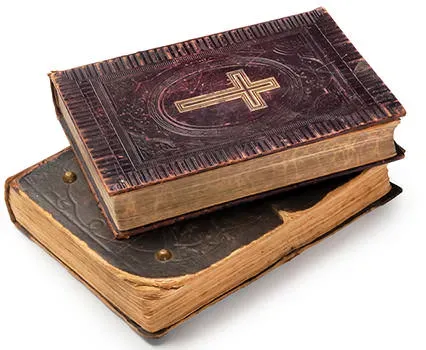 In his notes to Pliny's "Natural History,"" Hardium gives an obscure but genius explanation of the Gnostic name Amrasax. In the first three letter of the initials of the Hebrew words for father, son, and spirit (ab, ben, ruah), the Triune God. The last four letters are the initials of the Greek words, ""he saves men by the sacred wood"" (the cross). To combine Greek and Hebrew seems strange, however Alexandrine's odd eclecticism was known to do such things. Combining Hebrew and Greek was not uncommon. In fact, this particular sentence may have been a typical sentence that unified the Old and New Testaments. This wordplay would even have been looked upon as having supernatural powers."
In his notes to Pliny's "Natural History,"" Hardium gives an obscure but genius explanation of the Gnostic name Amrasax. In the first three letter of the initials of the Hebrew words for father, son, and spirit (ab, ben, ruah), the Triune God. The last four letters are the initials of the Greek words, ""he saves men by the sacred wood"" (the cross). To combine Greek and Hebrew seems strange, however Alexandrine's odd eclecticism was known to do such things. Combining Hebrew and Greek was not uncommon. In fact, this particular sentence may have been a typical sentence that unified the Old and New Testaments. This wordplay would even have been looked upon as having supernatural powers."
 At the time, the figure of the god Abrasax was engraved on many Gnostic amulets. Many different explanations and theories have been given about the significance of this figure. Abrasax was created by Basilides, who was the chief of the Gnostic "Basildes"" sect. This sect flourished in the early second century A.D. While the details of the form were similar to symbolism from the Egyptian and Western Asiatic, it is not possible to come up with solid reasons of why this form was chosen."
At the time, the figure of the god Abrasax was engraved on many Gnostic amulets. Many different explanations and theories have been given about the significance of this figure. Abrasax was created by Basilides, who was the chief of the Gnostic "Basildes"" sect. This sect flourished in the early second century A.D. While the details of the form were similar to symbolism from the Egyptian and Western Asiatic, it is not possible to come up with solid reasons of why this form was chosen."
 In 1159 AD, Seffrid, the Bishop of Chichester (A.D.1159) wore a famous
In 1159 AD, Seffrid, the Bishop of Chichester (A.D.1159) wore a famous ![]() jasper ring engraved with the famous Gnostic symbol. This ring can now be found in the treasury of the Cathedral of Chichester as it was found on the Bishop's skeleton. After Seffried's death, the symbol was then given an orthodox meaning. In fact, the symbol was not actually a pagan symbol as the Gnostics were "indifferent Christians."" Their beliefs came from a combination of late Alexandrian Greek philosophy doctrines and Christian tradition."
jasper ring engraved with the famous Gnostic symbol. This ring can now be found in the treasury of the Cathedral of Chichester as it was found on the Bishop's skeleton. After Seffried's death, the symbol was then given an orthodox meaning. In fact, the symbol was not actually a pagan symbol as the Gnostics were "indifferent Christians."" Their beliefs came from a combination of late Alexandrian Greek philosophy doctrines and Christian tradition."
 Often however, Christians wore gems with pagan designs. These came in the form of "Isis with the child Horus, which was taken to be the Virgin Mary with the infant Jesus."""
Often however, Christians wore gems with pagan designs. These came in the form of "Isis with the child Horus, which was taken to be the Virgin Mary with the infant Jesus."""
 A strange Gnostic
A strange Gnostic ![]() jasper amulet, dotted with red spots can be found Metropolitan Museum of Art, in New York. This amulet supposedly had the virtue of giving luck to the owner of a racehorse. On one side of the amulet is a horse with the victor's palm and the name "Tiberus"" written. On the other side is the vulture-headed figure of the god Abravus, along with the characters, ""ZACTA IAW BAPIA,"" which mean ""Lao the Destroyer and Creator."" It is believed that the amulet was actually placed on the horse during his races to ensure victory."
jasper amulet, dotted with red spots can be found Metropolitan Museum of Art, in New York. This amulet supposedly had the virtue of giving luck to the owner of a racehorse. On one side of the amulet is a horse with the victor's palm and the name "Tiberus"" written. On the other side is the vulture-headed figure of the god Abravus, along with the characters, ""ZACTA IAW BAPIA,"" which mean ""Lao the Destroyer and Creator."" It is believed that the amulet was actually placed on the horse during his races to ensure victory."
 Many eclectic amulets were used in the early Christian centuries. Another was one in the Cabinet de Medailles, in Paris. On one side of the amulet was a picture of Alexander the Great's head. On the other side was a donkey with her foal. Below the two animals was a scorpion and the name Jesus Christ. Another strange amulet like this also had Alexander the Great's head on it, while on the other side was a Greek monogram of the name Christos.
Many eclectic amulets were used in the early Christian centuries. Another was one in the Cabinet de Medailles, in Paris. On one side of the amulet was a picture of Alexander the Great's head. On the other side was a donkey with her foal. Below the two animals was a scorpion and the name Jesus Christ. Another strange amulet like this also had Alexander the Great's head on it, while on the other side was a Greek monogram of the name Christos.
 The power of the images engraved on precious gems would depend on the hour of the day and month of the year when they were being engraved. The extent of the power was due to the influence of the planets, stars and constellations on the engraving process. However, to achieve maximum power, the quality of the engraved image must match the quality of the gem on which it was being engraved. After the third or fourth century, the practice of engraving gems substantially diminished if not disappeared entirely.
The power of the images engraved on precious gems would depend on the hour of the day and month of the year when they were being engraved. The extent of the power was due to the influence of the planets, stars and constellations on the engraving process. However, to achieve maximum power, the quality of the engraved image must match the quality of the gem on which it was being engraved. After the third or fourth century, the practice of engraving gems substantially diminished if not disappeared entirely.
 Many ancient gems preserved from the Greek and Roman times were recognized as simply works of art, but in medieval and later times magical attributes became such an intrinsic part of engraved gems that often their meaning became completely different than its original purpose. Great creativity was often used to try to find some deep meaning between the carved image and the power of the gem itself. For example,
Many ancient gems preserved from the Greek and Roman times were recognized as simply works of art, but in medieval and later times magical attributes became such an intrinsic part of engraved gems that often their meaning became completely different than its original purpose. Great creativity was often used to try to find some deep meaning between the carved image and the power of the gem itself. For example, ![]() agate was awarded many different magical attributes based on its many different varieties with engravings on them, but in reality, agate was simply a stone best suited for multiple engravings.
agate was awarded many different magical attributes based on its many different varieties with engravings on them, but in reality, agate was simply a stone best suited for multiple engravings.
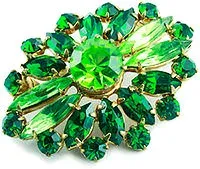 In the early centuries it became popular to engrave certain gems with certain images, for example, the
In the early centuries it became popular to engrave certain gems with certain images, for example, the ![]() emerald had to be engraved with a scarab next to a standing figure of Isis. The finished gem had to be pierced longitudinally and worn in a brooch by all members of the family. After a blessing has been pronounced one can rest assured that the true glory of the stone would be revealed, meaning the gemstone may become luminous.
emerald had to be engraved with a scarab next to a standing figure of Isis. The finished gem had to be pierced longitudinally and worn in a brooch by all members of the family. After a blessing has been pronounced one can rest assured that the true glory of the stone would be revealed, meaning the gemstone may become luminous.
The thirteenth century Book of Wings by Ragiel lists many symbolic designs on different stones. Here are some of them that we found interesting:
An Italian manuscript from the 14th century describes the following talismanic gems:
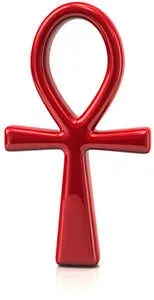 Many precious stones were found engraved with various symbols. Much significance was given to those symbols, and most symbols were recognized as having talismanic virtues. The swastika, the Egyptian "crux ansata"" symbol of life, and the Phoenician ""tau"" symbol that was to be stamped on the foreheads of the faithful in Jerusalem were all early Christian substitutions for the traditional cross. The ""monogrammatic cross"" was another variation of the cross used in the fifth-century art. It was a modification of the monogram formed from the first two letters of the name ""Christ"" in Greek."
Many precious stones were found engraved with various symbols. Much significance was given to those symbols, and most symbols were recognized as having talismanic virtues. The swastika, the Egyptian "crux ansata"" symbol of life, and the Phoenician ""tau"" symbol that was to be stamped on the foreheads of the faithful in Jerusalem were all early Christian substitutions for the traditional cross. The ""monogrammatic cross"" was another variation of the cross used in the fifth-century art. It was a modification of the monogram formed from the first two letters of the name ""Christ"" in Greek."
The original meaning of the swastika symbol has been explained as a symbol of fire, the four cardinal points of a compass, water and lightning. Rudolf Hoernes (1850-1912), an Austrian geologist, believed that the swastika is a representation of the human form, with the lower lines being the legs and the two horizontal lines being the outstretched arms.
Another interesting amulet used to protect against the Evil Eye was an engraved Sard with an eye in the middle, and seven deities all around it, one for each day of the week. Solis, represented by a lion, stood for Sunday; Luna, represented by a deer, stood for Monday; Martis, represented by the scorpion, stood for Tuesday. Mercury, represented by a dog, stood for Wednesday; Jovis, represented by a thunderbolt, stood for Thursday; Veneris, represented by a snake, stood for Friday; Saturni, represented by an owl, stood for Saturday. This way, the wearer was guaranteed protection from evil influences at all times.
Malachite, which often resembles an eye because of its peculiar bands, was also used as a talisman against the Evil Eye in some parts of Italy. These stones were triangular in shape and were usually set in silver. They were known as "peacock stones"" due to their intense green color and markings resembling a peacock tail."
In Italy, the figure of a rooster was another powerful amulet against "jettatura""- the Evil Eye. Dating to ancient times, the rooster's crowing was considered a hymn of praise designed to attain protection of the sun-god, and its image was a powerful symbol of courage. Therefore, the rooster became a defender of the weak, such as the women and children, against the spirits of darkness. Edmond Rostand, in his French play ""Chantecler"" (1907), wrote that the world enjoys sunrise every morning due to the magical powers of the rooster, thereby perpetuating the rooster's popularity as a potent talisman."
In Palestine, the Evil Eye was known as a menacing gift from beardless men with light blue eyes. To counteract this terrible threat from the "blued eyed monsters,"" Syrian women would adorn themselves with blue beads, blue ribbons or scarves, on the premise that ""similia similibus curantur"" ï¾– ""likes are cured by likes."""
It is a well-known fact that numerous amulets were made depicting images deemed offensive to us. The idea was that these distasteful images would show contempt for the evil spirits, thereby chasing them away. Legend has it that ex-Sultan Abdul Hamid pawned his controversial jewels in Paris for 1,200,000 francs or $240,000, but the images on these jewels were so revolting that no one wanted to buy them from the shop. Therefore, the stones and the pearls were removed from the setting and the gold was melted and sold as metal.
Another interesting fact was that the quality of the jewelry would often be determined by the price asked for it. The Roman philosopher Pliny (23-79 AD) recalls one incident where an ![]() emerald engraved with an image of an Amymone was offered for sale in the Isle of Cyprus at a price of six golden denarii. Ismenias, a flute player, ordered his men to purchase it for him. At the last minute, the dealer reduced the price and gave back two denarii. Ismenias exclaimed in anger that the value of the stone had been significantly compromised by the reduction in price.
emerald engraved with an image of an Amymone was offered for sale in the Isle of Cyprus at a price of six golden denarii. Ismenias, a flute player, ordered his men to purchase it for him. At the last minute, the dealer reduced the price and gave back two denarii. Ismenias exclaimed in anger that the value of the stone had been significantly compromised by the reduction in price.
Another variation of an engraved ![]() emerald used as an amulet was mentioned in a "The Virtues of Stones,"" a manuscript by Damigeron."" He recommends engraving it with an image of a scarab (beetle) with a crested parakeet beneath it. The same manuscript also recommends engraving a
emerald used as an amulet was mentioned in a "The Virtues of Stones,"" a manuscript by Damigeron."" He recommends engraving it with an image of a scarab (beetle) with a crested parakeet beneath it. The same manuscript also recommends engraving a ![]() jasper stone with an image of a fully armed Mars, the Roman god of war, and also of a virgin dressed in a flowing robe holding a laurel branch. The mythical author Cethel ascertains that a jasper stone engraved with the holy cross would protect one from drowning. Damigeron also suggests that when
jasper stone with an image of a fully armed Mars, the Roman god of war, and also of a virgin dressed in a flowing robe holding a laurel branch. The mythical author Cethel ascertains that a jasper stone engraved with the holy cross would protect one from drowning. Damigeron also suggests that when ![]() sard is worn by a woman, it becomes a good and fortunate stone. Therefore, it should be engraved with a symbol of a grape-vine and ivy intertwined."
sard is worn by a woman, it becomes a good and fortunate stone. Therefore, it should be engraved with a symbol of a grape-vine and ivy intertwined."
Sometimes, the true meaning of a carved gemstone gets lost over the years or becomes horribly misrepresented. An interesting example of this phenomenon occurred in the 15th-century essay on gems written in French. The treatise reads: "If you find a dromedary engraved on a stone with hair flowing over its shoulders, this stone will bring peace and concord between man and wife."" The original Latin text mentions Andromeda, a princess in Greek mythology, in this passage, not ""dromedary,"" which is a one-humped camel. That's nothing short of a miracle where a mythological princess can turn into a camel."
Even some of the early writers were sometimes skeptical of the virtues attributed to these engraved gems. Several even admitted that some Greek and Roman engravers executed their designs for ornamental purposes instead of crafting gems for talismanic use. Since the art of engraving gems was not practiced in the Middle Ages, some medieval writers suggested that engravings found on gems were actually works of nature. According to Konrad von Megenberg (1309-1374), a German Catholic writer and scholar, G-d specifically created these stones as a way to comfort the human race with their beauty.
Finally, we will take a look at some of the most famous gemstones and their inscriptions. The first one described by the author is a famous ![]() topaz owned by Hadrianus Gulielmus of Naples. It contained the following inscription in ancient Roman letters: "Natura deficit, fortuna mutatur, Deus omnia cernit,"" which can be translated as ""Nature may fail us, fortune may change, G-d observes all from above."""
topaz owned by Hadrianus Gulielmus of Naples. It contained the following inscription in ancient Roman letters: "Natura deficit, fortuna mutatur, Deus omnia cernit,"" which can be translated as ""Nature may fail us, fortune may change, G-d observes all from above."""
The next famous gemstone is a ![]() turquoise two inches in diameter which contains an inscription in gold letters from the Koran. This turquoise, now rumored to be at the Imperial Academy of Moscow, was formerly worn by the Shah of Persia as an amulet and was valued at 5,000 rubles by the jeweler that crafted it.
turquoise two inches in diameter which contains an inscription in gold letters from the Koran. This turquoise, now rumored to be at the Imperial Academy of Moscow, was formerly worn by the Shah of Persia as an amulet and was valued at 5,000 rubles by the jeweler that crafted it.
The last famous amulet is a seal from the watch-chain that Emperor Napoleon III left to his son, Prince Imperial, as an amulet. The seal featured the following inscription in Arabic letters, "The slave Abraham relying on the Merciful One."" Unfortunately, the talisman must have lost its virtue, because Prince Imperial was killed in South Africa while fighting in the Anglo-Zulu War of 1879."